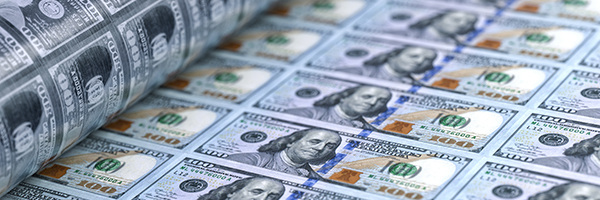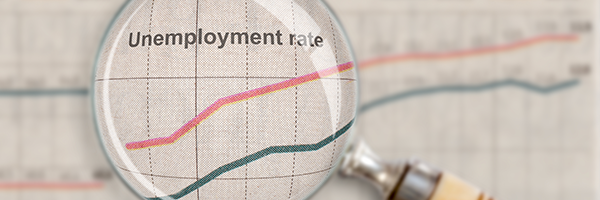
October 31, 2021 | Daily JAM, Morning Briefing |
Even though earnings season isn’t over, I expect macro news to dominate the financial market action. Both from the Federal Reserve (on Wednesday) and with the release of the October jobs report (on Friday.

October 26, 2021 | Daily JAM, Morning Briefing |
As bond yields have tumbled because of the Federal Reserve’s lower interest rates for longer monetary stance, investors have compensated by buying longer duration bonds. The logic is pretty simply. A one-year Treasury now yields 0.11%. A two-year Treasury pays 0.45%. A five-year Treasury yields 1.18%. The benchmark 10-year Treasury was paying 1.61% at the close today, October 26. Want more yield? You can buy the 30-year Treasury for a yield of 2.04%. The problem is that the longer the duration of a bond–the more time until maturity–the bigger the downward move in bond prices if/when the Federal Reserve decides to raise interest rates or if/when the financial markets decide to anticipate a Fed move by selling bonds ahead of any move by the U.S. central bank.

October 14, 2021 | Daily JAM, Short Term |
You can see yesterday’s stock rally and its continuation today as a return of the Goldilocks market. Yesterday, for example, inflation, if you look just at core inflation–that is without food and energy prices–looked strong enough to make the Federal Reserve very cautious about removing monetary stimulus from the economy, but core inflation wasn’t so strong that it sent up warning flares. And today, the drop in initial claims for unemployment to 293,000 (for the week ended October 9) for a new Pandemic low argues that the economy continues to improve but that the economy in general and the job market in particular are neither too hot nor too cold In other words a Goldilocks scenario.

October 8, 2021 | Daily JAM, Short Term |
Why the lack of a reaction to the disappointing September jobs report that fell into territory that had been billed as a market moving event? Because Wall Street didn’t believe the headline jobs numbers. And with good reason.

October 7, 2021 | Daily JAM, Morning Briefing |
Economists surveyed by Bloomberg are expecting the economy to have added 500,000 jobs in September. Anything way above or way below the number will move expectations on when the Federal Reserve will begin to reduce its monthly purchases of Treasuries and mortgage-backed assets from the current level of $120 billion a month. That taper is being widely watched as an indicator of when the Federal Reserve might raise interest rates themselves.

October 1, 2021 | Daily JAM, Morning Briefing |
The Personal Consumption Expenditures index, the Federal Reserve’s preferred inflation measure, acce... To subscribe to JAM you need to fill in some details below including, ahem, some info on how you'll pay us. A subscription is $199 (although if you're subscribing...

September 27, 2021 | Daily JAM, Morning Briefing |
After being range-bound for months, yields on the 10-year Treasury broke through the top of a range that’s held since mid-July. Yields ended the week at 1.45%. The 50-day moving average on 10-year yields was 1.29% on Friday. The 2021 low, set in August, was 1.13%. The high yield, set in March, was 1.77%. This morning (September 27) the yield on the 10-year Treasury has climbed to 1.48%.

September 23, 2021 | Daily JAM, Videos |
I’m starting up my videos on JubakAM.com again–this time using YouTube as a platform. My forty-ninth YouTube video “The market’s big fear is the economy” went up today.

September 22, 2021 | Daily JAM |
As expected the Federal Reserve’s Open Market Committee kept the central bank’s benchmark interest rate at 0% to 0.25% and left its bond buying program on a path to buy $120 billion of Treasuries and mortgage-backed assets a month. Unexpectedly, though, the bank indicated that a reduction in that bond buying program could happen “soon.” progress toward the Fed’s employment and inflation goals “continues broadly as expected, the committee judges that a moderation in the pace of asset purchases may soon be warranted,” the central bank’s said Wednesday in a statement following its two-day meeting. The Fed’s dot plot survey of central bank officials also revealed a move toward raising interest rates earlier than in the last survey in June.

September 20, 2021 | Daily JAM, Mid Term |
Just about all of the Pandemic stimulus programs–checks for households, no-cost small business loans, enhanced unemployment payments–will have expired by sometime in 2022. Which is leading economists to project a slowdown in the U.S. economy for the second half of 2022. No matter what the size of the Biden administration budget finally turns out to be. U.S. fiscal policy will go from stimulating economic activity to acting as a drag on the economy. The Brookings Institution’s Hutchins Center calculates that the economic impact from federal, state and local-government taxes and spending turned negative in the second quarter of 2021 and will remain that way into 2023.

September 18, 2021 | Daily JAM, Short Term |
I expect that the the financial markets will remember this week that the Federal Reserve will actually say something after its meeting on Wednesday, September 22. Even if the Fed doesn’t change policy at all, the central bank will deliver a new set of economic projections with views on inflation and GDP growth that could add volatility to an already nervous markThe CME Fed Watch Tool, which looks at prices in the Fed Funds Futures market to calculate market expectations for an interest rate move by the Federal Reserve, says there’s a 0% chance of a change in interest rates at Wednesday’s meeting. The odds for a Fed interest rate increase go up to only 1.8% at the November 3 meeting according to the CME Fed Watch. And are only 1.7% for the December 15 meeting. In other words the market is utterly convinced that the Fed will do nothing.

September 14, 2021 | Daily JAM, Morning Briefing |
This morning the Bureau of Labor Statistics reported that the Consumer Price Index (CPI) rose 0.3% in August (on a seasonally adjusted basis.) That comes after a 0.5% increase in July. Year over year the headline CPI rose 5.3% in August. That’s slightly below the 5.4% 12-month increase in July.











